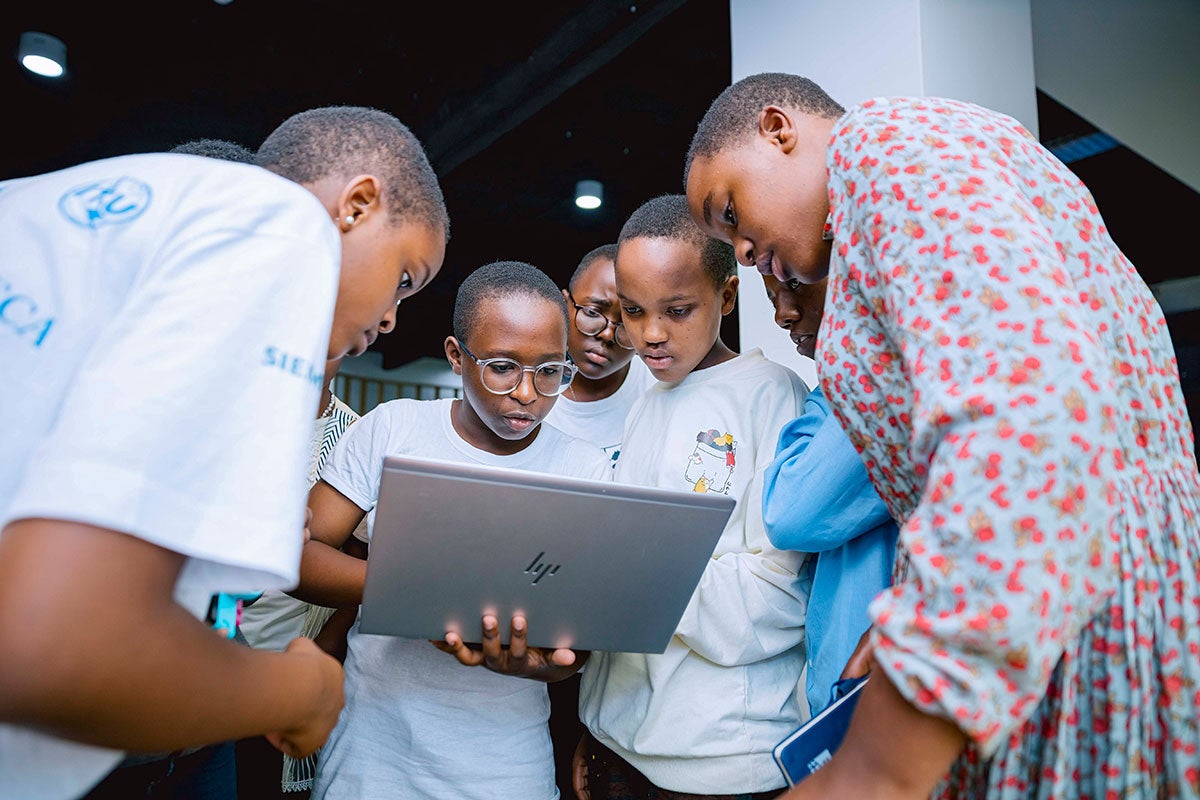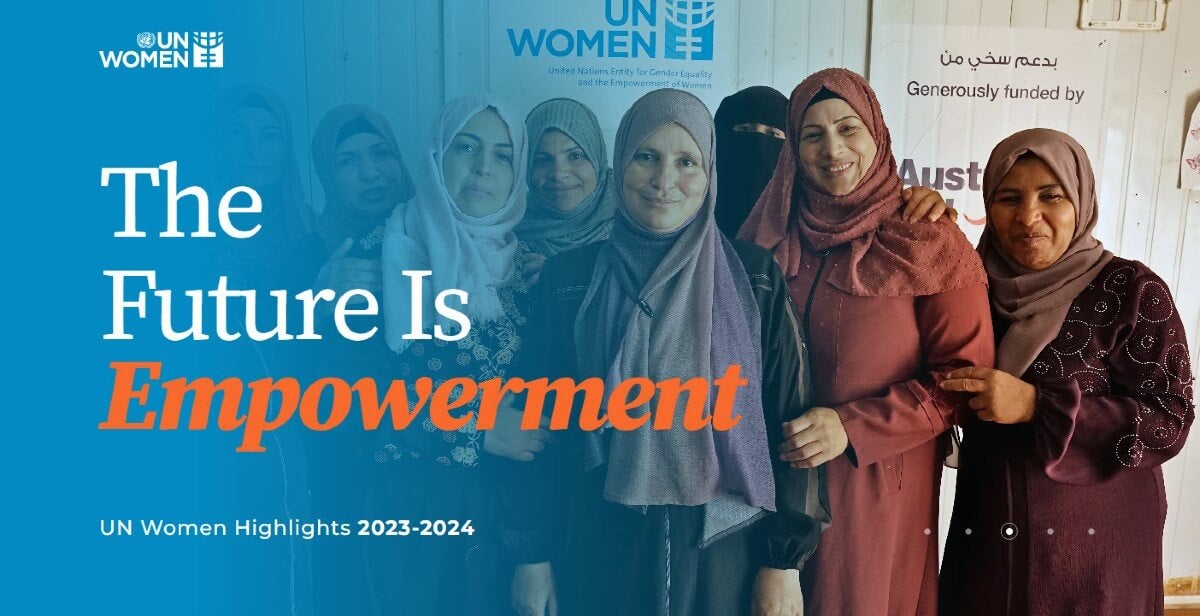Artificial Intelligence and gender equality
The world has a gender equality problem, and Artificial Intelligence (AI) mirrors the gender bias in our society.
Although globally more women are accessing the internet every year, in low-income countries, only 20 per cent are connected. The gender digital divide creates a data gap that is reflected in the gender bias in AI.
Who creates AI and what biases are built into AI data (or not), can perpetuate, widen, or reduce gender equality gaps.

What is AI gender bias?
A study by the Berkeley Haas Center for Equity, Gender and Leadership analysed 133 AI systems across different industries and found that about 44 per cent of them showed gender bias, and 25 per cent exhibited both gender and racial bias.
Beyza Doğuç, an artist from Ankara, Turkey, encountered gender bias in Generative AI when she was researching for a novel and prompted it to write a story about a doctor and a nurse. Generative AI creates new content (text, images, video, etc.) inspired by similar content and data that it was trained on, often in response to questions or prompts by a user.
The AI made the doctor male and the nurse female. Doğuç continued to give it more prompts, and the AI always chose gender stereotypical roles for the characters and associated certain qualities and skills with male or female characters. When she asked the AI about the gender bias it exhibited, the AI explained it was because of the data it had been trained on and specifically, “word embedding” – which means the way certain words are encoded in machine learning to reflect their meaning and association with other words – it’s how machines learn and work with human language. If the AI is trained on data that associates women and men with different and specific skills or interests, it will generate content reflecting that bias.
“Artificial intelligence mirrors the biases that are present in our society and that manifest in AI training data,” said Doğuç, in a recent interview with UN Women.
Who develops AI, and what kind of data it is trained on, has gender implications for AI-powered solutions.
Sola Mahfouz, a quantum computing researcher at Tufts University, is excited about AI, but also concerned. “Is it equitable? How much does it mirror our society’s patriarchal structures and inherent biases from its predominantly male creators,” she reflected.
Mahfouz was born in Afghanistan, where she was forced to leave school when the Taliban came to her home and threatened her family. She eventually escaped Afghanistan and immigrated to the U.S. in 2016 to attend college.
As companies are scrambling for more data to feed AI systems, researchers from Epoch claim that tech companies could run out of high-quality data used by AI by 2026.
Natacha Sangwa is a student from Rwanda who participated in the first coding camp organized under the African Girls Can Code Initiative last year. “I have noticed that [AI] is mostly developed by men and trained on datasets that are primarily based on men,” said Sangwa, who saw first-hand how that impacts women’s experience with the technology. “When women use some AI-powered systems to diagnose illnesses, they often receive inaccurate answers, because the AI is not aware of symptoms that may present differently in women.”
If current trends continue, AI-powered technology and services will continue lacking diverse gender and racial perspectives, and that gap will result in lower quality of services, biased decisions about jobs, credit, health care and more.
How to avoid gender bias in AI?
Removing gender bias in AI starts with prioritizing gender equality as a goal, as AI systems are conceptualized and built. This includes assessing data for misrepresentation, providing data that is representative of diverse gender and racial experiences, and reshaping the teams developing AI to make them more diverse and inclusive.
“When technology is developed with just one perspective, it’s like looking at the world half-blind,” concurred Mahfouz. She is currently working on a project to create an AI-powered platform that would connect Afghan women with each other.
“More women researchers are needed in the field. The unique lived experiences of women can profoundly shape the theoretical foundations of technology. It can also open new applications of the technology,” she added.
“To prevent gender bias in AI, we must first address gender bias in our society,” said Doğuç from Turkey.
There is a critical need for drawing upon diverse fields of expertise when developing AI, including gender expertise, so that machine learning systems can serve us better and support the drive for a more equal and sustainable world.
In a rapidly advancing AI industry, the lack of gender perspectives, data, and decision-making can perpetuate profound inequality for years to come.
The AI field needs more women, and that requires enabling and increasing girls’ and women’s access to and leadership in STEM and ICT education and careers.
The World Economic Forum reported in 2023 that women accounted for just 29 per cent of all science, technology, engineering and math (STEM) workers. Although more women are graduating and entering STEM jobs today than ever before, they are concentrated in entry level jobs and less likely to hold leadership positions.

How can AI governance help accelerate progress towards gender equality?
International cooperation on digital technology has focused on technical and infrastructural issues and the digital economy, often at the expense of how technological developments were affecting society and generating disruption across all its layers – especially for the most vulnerable and historically excluded. There is a global governance deficit in addressing the challenges and risks of AI and harnessing its potential to leave no one behind.
“Right now, there is no mechanism to constrain developers from releasing AI systems before they are ready and safe. There’s a need for a global multistakeholder governance model that prevents and redresses when AI systems exhibit gender or racial bias, reinforce harmful stereotypes, or does not meet privacy and security standards,” said Helene Molinier, UN Women’s Advisor on Digital Gender Equality Cooperation in a recent interview with Devex.
In the current AI architecture, benefits and risks are not equitably distributed, with power concentrated in the hands of a few corporations, States and individuals, who control talent, data and computer resources. There is also no mechanism to look at broader considerations, like new forms of social vulnerability generated by AI, the disruption of industries and labour markets, the propensity for emerging technology to be used as a tool of oppression, the sustainability of the AI supply chain, or the impact of AI on future generations.
In 2024, the negotiation of the Global Digital Compact (GDC) offers a unique opportunity to build political momentum and place gender perspectives on digital technology at the core of a new digital governance framework. Without it, we face the risk of overlaying AI onto existing gender gaps, causing gender-based discrimination and harm to be left unchanged – and even amplified and perpetuated by AI systems.
UN Women's position paper on the GDC provides concrete recommendations to harness the speed, scale, and scope of digital transformation for the empowerment of women and girls in all their diversity, and to trigger transformations that set countries on paths to an equitable digital future for all.






